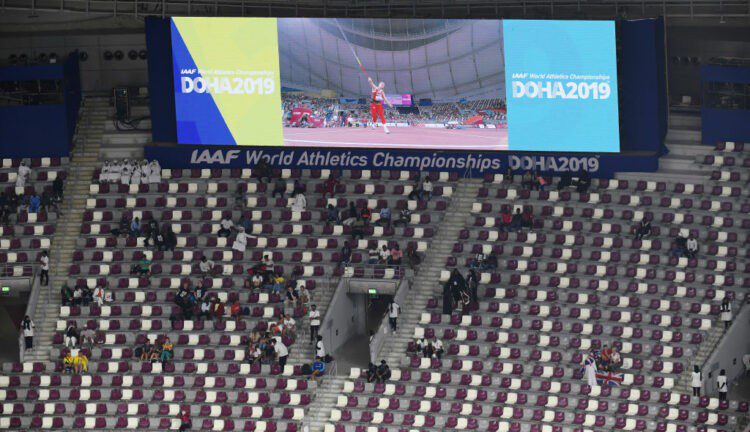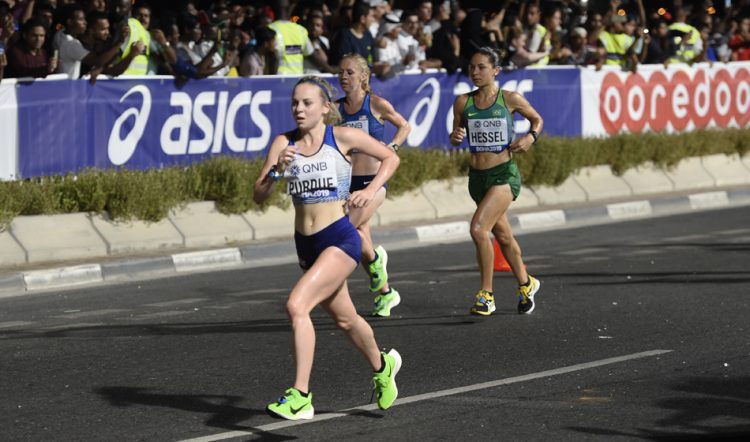Football fans take a step into the unknown when they arrive at the FIFA World Cup this month but Qatar is already a well-known destination for track and field athletics followers
I first visited Qatar 22 years ago for the International Association of Athletics Federations (IAAF) Grand Prix Final. The meeting took place just days after the climax of the 2000 Sydney Olympics and was staged in sweltering heat in the capital city Doha. This was Qatar’s chance to make its mark on the sporting stage but the event was mired in controversy even before starting gun for the first race was fired.
“A dreadful mistake,” blasted David Powell, athletics correspondent of The Times. “Never a year passes without the IAAF taking one of its world series events to a venue which attracts two men and a dog or, in this case, two sheikhs and a camel.”
Three years earlier Qatar had staged its first major international athletics meeting – the Doha Grand Prix – and it used these competitions as a springboard to get its foot on the sporting ladder.
In 2006 Doha hosted the Asian Games, whereas 2010 saw the city hold the World Indoor Athletics Championships in addition to joining the prestigious Diamond League athletics circuit in the same year. In December 2010, meanwhile, Qatar was awarded the 2022 FIFA World Cup amid allegations of bribery and corruption.
Concerns about the ferociously hot climate in the area, not to mention human rights issues, were all seemingly trumped by the fact Qatar had billions of petro-dollars to invest into facilities such as the Aspire Dome, a spectacularly impressive multi-purpose sports arena which hosted a 2010 World Indoor Championships that featured Jessica Ennis and Dwain Chambers among the winners.
I visited Doha again on a press trip in 2014 after the city had been awarded the right to stage the World Athletics Championships in 2019. The event is the biggest track and field competition outside the Olympic Games and would serve as an ideal warm-up for the FIFA World Cup itself three years later.
2022 FIFA World Cup fans (Getty)
Much had changed since my first visit at the turn of the millennium. Doha had developed enormously – and was still growing at a fast pace with construction works in almost every street – and there was clearly a class divide between humble locals and immigrant workers carrying out manual labour and the richer Qataris dressed in brilliant white national robes in pristine, air-conditioned buildings.
In late September of 2019 I headed out to the World Athletics Championships itself amid concerns that the sport’s flagship event was being staged in a country that did not have a great tradition of track and field. It was the first time the championships had been held in the Middle East and with events spilling into October for the first time. How would athletes and spectators handle heat that routinely rose above 40C or 100F in the daytime? Would many fans actually turn up at the stadium to watch?
At the beginning of the 10-day championships the sport’s worst fears came true as rows of empty seats lined the stands in the Khalifa Stadium. Only 7266 spectators were present on the opening weekend to watch the women’s 100m, for example, although this rose later in the week when 42,180 came to see Qatar’s No.1 athlete, Mutaz Essa Barshim, win high jump gold.

2019 World Champs (Getty)
Bizarrely there was no local TV coverage either. This was because a channel in Abu Dhabi held the rights but was reluctant to show the action due to the United Arab Emirates having a political dispute with its Qatari neighbour.
Concerns about heat in the main stadium were solved by a system of giant pipes that blew cold air on the track. This circulated around the spectator seats and ensured the temperatures were bearable. Out on the roads it was a different matter, though, as marathon runners and race walkers wilted in the heat, despite the marathons being held at midnight to avoid the worst heat of the day.

Charlotte Purdue struggling in the marathon in Doha (Mark Shearman)
Kevin Mayer, the world decathlon record-holder from France, said: “It’s obvious it’s a disaster. There is no one in the stadium and we saw about 30 people drop out of the women’s marathon, which is sad. By organising the championships here they didn’t put the athletes first.”
Emma Coburn, America’s No.1 steeplechaser, added: “It’s brutal and dangerous and I don’t envy them at all. It’s very, very hot out there.”
On the crowds in the main stadium itself, British heptathlete Denise Lewis said: “It’s shocking. The athletes deserve people, an energy and an atmosphere to thrive on.”
Volha Mazururonak, the 2018 European marathon champion from Belarus who finished fifth in the marathon in Doha in 2019, blasted: “It’s disrespect toward the athletes. A bunch of officials decided it would take the world championships here but they are sitting in the cool.”
Seb Coe, the president of World Athletics, had inherited the event before he took his position but he defended the decision to hold the event in Doha by arguing that athletics should try to establish itself in new areas, adding: “There have been challenges, of course. Every championships have them. But we have punched through.”

During these championships I stayed in a good hotel near the Corniche but had a hefty trip of almost an hour to get to the athletics stadium each day. I was staying with a number of hardcore members of the British Athletics Supporters’ Club, too, some of whom had been to every World Athletics Championships since the inaugural event in Helsinki in 1983.
“From the absence of water in the stadium on the first weekend to the scarcity of programmes, lack of local TV coverage and torrid head, the fans had plenty of challenges,” I wrote in Athletics Weekly. “But they simply got on with it and enjoyed their trip.”
I added: “The life blood of athletics, they are passionate, knowledgeable, intensely loyal to their sport and wonderfully eccentric. The athletes are lucky to have them.”

British fans in Doha 2019 (Jamin)
I bumped into one of the fans, Bob Dobson, several times during the week sitting on a bench outside our hotel in the middle of the day. They say ‘mad dogs and Englishmen go out in the midday sun’ and it was certainly true of myself and Bob as we sat in the heat chatting about the athletics results while sweating profusely.
Bob, who was aged 77 at the time, was a former international race walker and therefore something of a masochist and he was deliberately subjecting himself to the heat in what was effectively an outdoor sauna. However half an hour or so was enough for anybody and we were soon glad to retreat to the cooler surroundings of our hotel.
Daft enough to try my first outdoor run in Doha. A cool 34C at dusk. #sweaty pic.twitter.com/hOiyl83vJN
— Jason Henderson (@Jason_AW) October 4, 2019
Back in the Khalifa Stadium, the actual athletics was entertaining but I reported: “The presentation in the stadium is good and the air-conditioning system works. Problem is, there is hardly anyone there to enjoy it.
“Alarm bells will surely be ringing at FIFA as they prepare for the football World Cup here in 2022.”
So how will fans fare at the World Cup this month? I imagine the experience in the various stadia will be great with fantastic football and, if the giant cooling fans work as they did in 2019, bearable temperatures of around 22-25C. The heat does tend to dissipate a little at night, too, whereas organisers have scheduled the tournament for late November and early December as well.
But I do not envy anyone who sets foot outside during the day time. The heat can be ferocious and there is not really a lot to see or do.
If you are going to Qatar simply for the football matches, then great. If you are expecting to drink alcohol (which is illegal in public) and enjoy the sights in between games, then you should prepare to be disappointed.
My own experiences of covering athletics in Qatar have not been terrible. It is an interesting place to visit and, like most places, there are good and bad elements. With the FIFA World Cup, I guess the negative stories and controversies will also be largely forgotten once the first ball is kicked.
» For more AW news, CLICK HERE